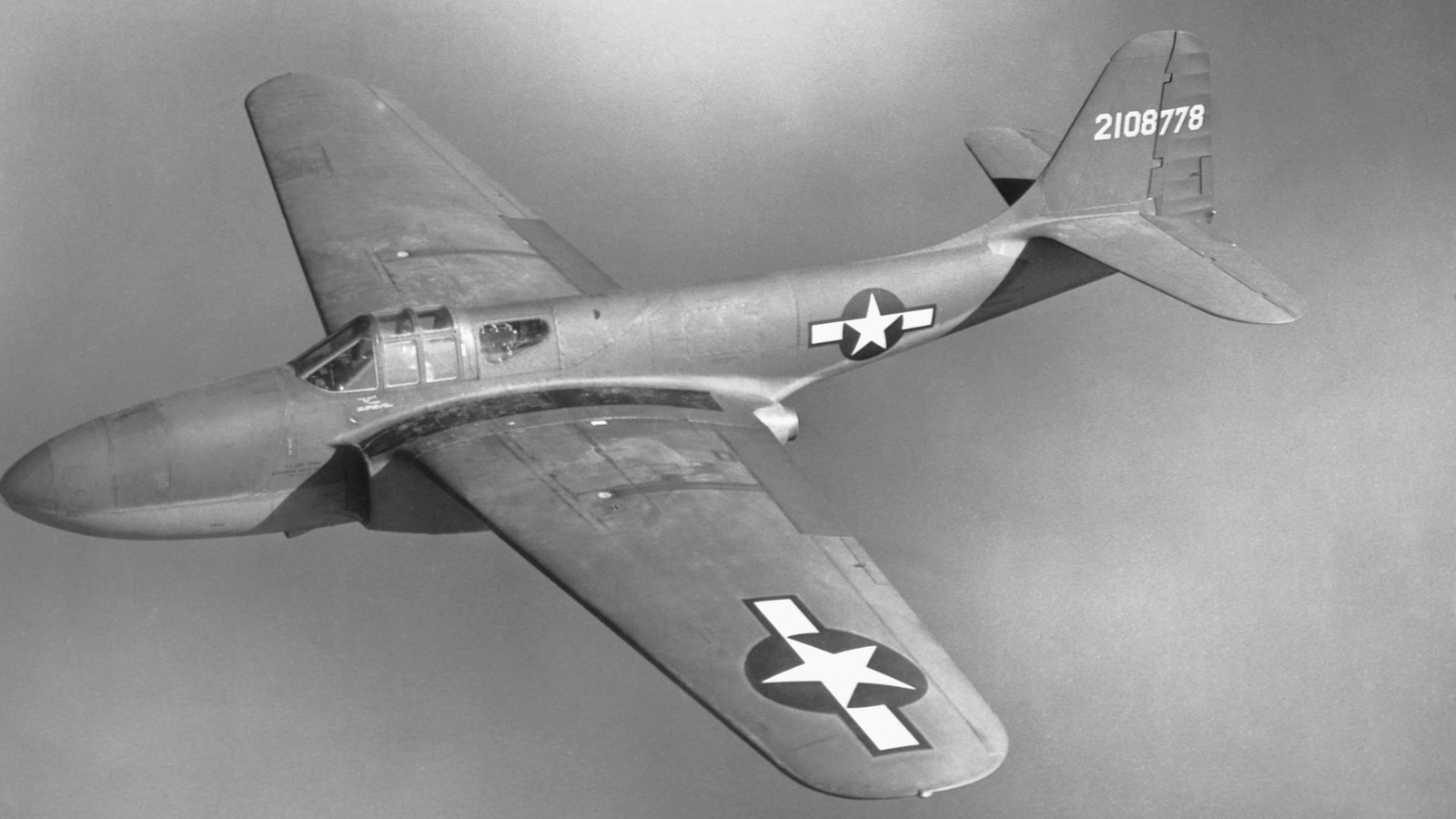The plan to build an American jet aircraft began in 1941 after the U.S. acquired a British Power Jets W.1 engine. With new technology in hand, plans arrived at General Electric. The American version was dubbed the General Electric I-A. Bell Aircraft was tapped to develop different jets using the engine, and the company developed 13 prototype aircraft designated P-59/A, XP-59A, and YP-59A. These were put through testing and flight demonstrations before delivery to the military, which began in July 1943.
The Bell P-59 Airacomet was a marvel of modern military aviation, but it wasn’t comparable to the more battle-tested P-51 Mustang, Lockheed P-38 Lightning, or Republic P-47 Thunderbolt. The Army initially ordered only 100 Airacomets, which could fly up to 409 mph at an altitude of 35,000 feet. It also featured a pressurized cabin, metal skin, and a single 37 mm cannon with three .50 caliber machine guns. The Airacomet had several issues identified through its testing phase, and its inability to match its predecessor’s abilities ensured it never saw combat.
It was clear that further development was required to bring viable jet aircraft technology to the front lines. While the P-59 Airacomet didn’t meet expectations of the nascent technology, it paved the way for the jets that followed. The military decided not to proceed with the P-59 and instead focused its attention on the Lockheed P-80 Shooting Star, which ultimately became the United States’ first operational jet fighter.







